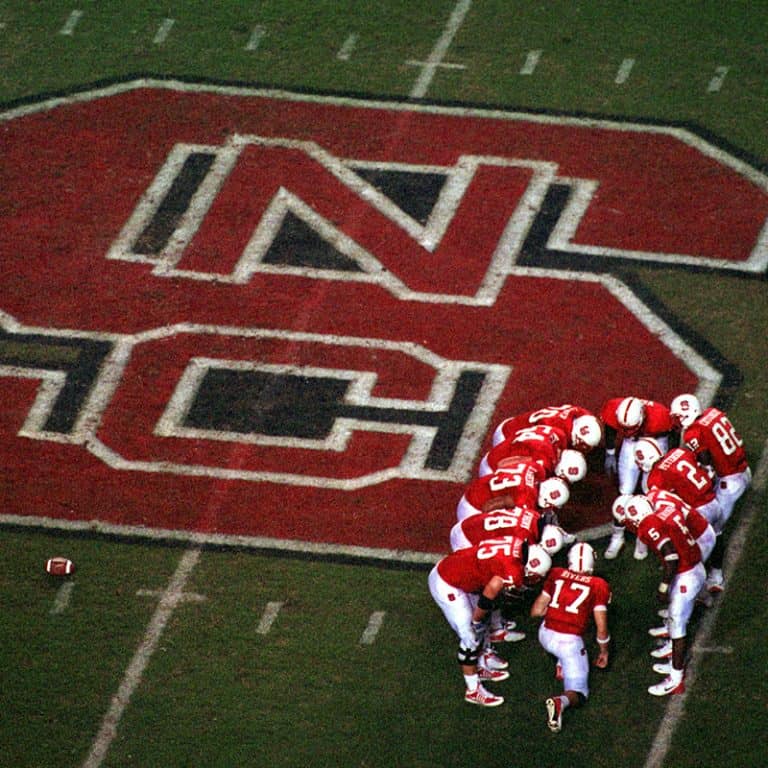The Basics of a Football Team’s Structure
How many people in a football team? Understanding the basics of a football team’s structure is crucial for any fan. It’s about knowing who does what and why.

Number and Roles of Players on the Field
In standard football, 11 players make up a team during a match. This group comprises one goalkeeper and ten outfield players, each assigned specific roles. These roles are vital for both offensive plays and defensive strategies, ensuring the game flows smoothly.
Goalkeepers: The Last Line of Defense
The goalkeeper is crucial, serving as the team’s last defense against the opposing team’s attacks. Their main job is to stop the ball from entering the goal, making quick decisions and often spectacular saves.
Defenders: The Protectors of the Goal
Defenders play just in front of the goalkeeper and focus primarily on blocking attacks from the opposition. They are the iron wall that stands between the ball and their goal.
Midfielders: The Heart of the Team
Midfielders are essential and can be seen as the team’s engine. They cover a huge amount of ground during a game and are central in both defending and attacking, making them a critical link.
Forwards: The Goal-Scoring Spearhead
Forwards are the main attackers in the team, often positioned closest to the opponent’s goal. Their primary mission is to score goals and they are usually the fastest players, with fine ball control and good shooting skills.
Understanding the Role of Substitutes and Squad Size
Understanding substitutes and the overall squad is key in football.
Substitution Rules and Strategic Use
Football matches allow for a set number of substitutions. This helps teams adapt their strategies mid-game. Subs often respond to injuries, tactical shifts, player fatigue, and time management. Coaches use subs to maintain the team’s strength throughout the game. Timely substitutions can alter the match’s outcome.
Squad Size Variations Across Competitions
Different competitions have varying squad size rules. Squad sizes can range from 18 to 23 players. This allows for a mix of starters and subs to manage various game situations. Larger squads offer more options for tactical changes and covering injuries.
Different Formats of the Game: Team Size Variability
How many people in a football team? Football is not one-size-fits-all. The game adapts to different places and people.
Futsal: A Faster-Paced, 5-a-side Variant
Futsal shrinks football to a high-speed, skillful 5-a-side game. It’s played indoors on small courts, pushing players to think and act quickly. Goals are often scored in this fast-paced version, thrilling players and spectators alike.
Seven-a-Side Football: Balancing Skill and Strategy
Seven-a-Side football suits both recreational leagues and young players. It’s a sweet spot where fewer players on the field mean more chances to touch the ball, pass precisely, and boost game intelligence.
Adaptations for Youth Football: Smaller Teams, Greater Involvement
Youth football tweaks team sizes to match kids’ development. With fewer players like 5-a-side or 6-a-side, young athletes get more ball time, gain confidence, and hone their skills. It ensures fun and growth for the next generation of players.

A Glimpse into Football’s Past: The Evolution of Team Sizes
Football’s past is filled with changes, especially in how many people formed a team.
Early Variations in Player Numbers
In the early days, team sizes varied greatly. Some matches had up to 20 players on each side. This often led to chaotic games and a lack of clear rules.
The Standardization of the 11-Player Team
Over time, a standard 11-player team emerged. This change happened in the mid-19th century. Football associations wanted more strategy and order in the game. So they set team sizes to 11, shaping football into the structured sport we enjoy today.
The Strategic Depth of Team Composition
Understanding the strategic depth of team composition is key to mastering football.
Designing Formations for Tactical Advantage
Coaches craft formations to leverage their team’s strengths and opponents’ weaknesses. Popular formations like 4-3-3 focus on attack, while 5-4-1 prioritizes defense. Each player’s role is vital in these formations, from defenders halting opponents to forwards aiming at the goal. The right formation can control the match’s flow and secure wins.
In-Match Adjustments and Flexibility
Adapting to the game’s progress is crucial for success in football. Coaches actively observe changes in the opponent’s play, enabling them to make quick decisions regarding adjustments in formations and strategies. Additionally, substitutes significantly contribute to the game by bringing fresh skills and energy onto the field. When coaches deploy these substitutes, they can revitalize the team’s performance and enhance their tactical options.
Moreover, flexibility in approach allows a team not only to recognize challenges but also to respond effectively. As situations evolve during a match, players must remain alert and ready to adjust their strategies accordingly. This proactive mindset empowers the team to capitalize on weaknesses in the opponent’s game plan and seize control of the match.
In conclusion, the combination of keen observation, effective substitutions, and a flexible strategy creates a winning formula. By staying adaptable, a team can turn potential setbacks into opportunities, ultimately leading to success on the field.
The Role of Team Composition in Football’s Legacy
How Team Building Influences Performance and Success
How many people in a football team? Team building in football is crucial for both performance and success. A well-constructed team, with a mix of skills and roles, can navigate a season’s challenges. This includes managing player fatigue and tactical shifts during games. Coaches work hard to create a balanced squad, strategically picking each player. Teams that get this right often see consistent success and fewer in-season issues.
Good team composition also enables smooth in-match adjustments. When things don’t go as planned, having versatile players allows for quick strategy changes. Successful teams are those that can seamlessly switch formations and tactics, and respond to the unpredictable nature of the game.
Above all, effective team building creates a unified group, where players’ strengths complement each other. Such harmony not only leads to victories but also captivates fans, fostering a strong team identity.
Football’s Global Appeal Through Diverse Team Formats
Football’s global appeal arises from its remarkable ability to adapt team sizes, making the sport accessible to everyone. Various formats, such as futsal’s rapid 5-a-side and the strategic 7-a-side game, showcase football’s impressive versatility. These different formats invite players of all backgrounds and skill levels, ensuring that everyone can participate, irrespective of the size of the venue.
Youth adaptations, featuring setups like 5-a-side teams, actively promote personal development among young players. By engaging more children in the game, these formats foster a deeper love and appreciation for football. Smaller team sizes allow each child to shine on the pitch, giving them ample opportunities to refine their skills and expressing their passion for the sport. As they play, they develop not only their technical abilities but also teamwork and communication skills.
Moreover, these diverse team structures contribute significantly to the global popularity of football. They ensure that individuals can enjoy the thrill and excitement of the game, regardless of the location or the number of players available. This adaptability plays a crucial role in football’s status as the world’s favorite sport. As such, the sport continues to cultivate a sense of community and togetherness, drawing people from all walks of life to experience the joy that football brings. Ultimately, the versatility of football not only enriches the game but also strengthens its enduring legacy across the globe.
